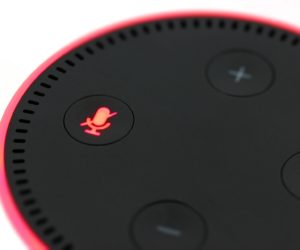In a world where connected devices have already outnumbered the world’s population, many claim emphasis should switch from their number to the value they bring to humankind, namely the power of software and services to enable the capture, interpretation, and action on data.
In other words, if investment cards are played well, we can smartly utilize IoT projects to collect real-time data and leverage information to turn it into action.

Get started building your custom IoT solution with an Agile-driven Pentalog team!
Download our price list
What does the overall IoT market look like right now?
Worldwide spending on the IoT is forecast to reach $1.2T in 2022, according to Forbes. That represents a Compound Annual Growth Rate (CAGR) of 13.6% over the 2017-2022 forecast period. This is a strong indication of an upward-curving bull market in IoT, as indicated by the market’s 37% growth to $151B in 2018 over a 1-year period. (Source: IDC)
Ericsson, a multinational leader in networking and telecommunication, forecasts the number of cellular connections to increase to 3.5B in 2023 at a CAGR of 30%, 62% of those being in Northeast Asia.
It’s not for nothing that this sector is growing so quickly. 90% of senior executives in technology, media, and telecommunications industries said in 2018 that “IoT is critical to some or all lines of their business … 54% are confident that their company was buildingsufficient digital trust controls into their IoT programs” (Source: Statista).
What sectors are expecting the largest investments?
Storage & Platforms, as well as Hardware IoT technology both experienced the largest capital investments in 2018, and are expected to be dominant in 2019, according to IoT Analytics.
Modules and sensors dominated hardware spending in 2017 and 2018, with enterprise software spending up 11.1% (to $391B) within the latter in total software spending, specifically horizontal and analytics software. Cross-industry and vertical-specific devices, meanwhile, have taken the lead in terms of connectivity, showing a stabilization of IoT projects across companies in terms of market need verified by investment volume.
Our team of 100 IoT engineers, cross-functional on IoT projects involving smart cities, healthcare, automotive, and building and home automation, will strengthen your R&D, design, architecture, and development needs.
Smart Cities
Recycling, transport and industrial companies are constantly looking to arness IoT projects to develop innovative devices that improve people’s overall quality of life. Scarce resources and the growing demands of larger populations require smarter use of limited goods and greater connectivity. With smart cities at the core of the IoT, citizens can benefit from the entire spectrum of smart components and the advantages they bring.
One of the IoT’s biggest assets is its versatility and reliability, serving a wide range of city goals and driving a more sophisticated approach to company asset management at lower costs.
Given that 66% of the worldwide population will reside in urban regions by 2050, cities must pre-empt the needs of those giant populations by creating more sustainable, secure systems that keep up with the challenges of urbanization and sustainable growth.
Pentalog provides the skills and organization to help our clients design, develop and launch IoT projects. Contact us to learn more!
MedTech
Medical technology has evolved massively in recent years, making data more accessible to patients, thus providing them with better services. From thermometers to electrocardiograms and ultrasounds – everything that can be connected makes patients’ lives easier and improves what doctors called “proactive management”.
The sheer volume of data collected from patients gives managers of IoT projects and healthcare providers the opportunity to mine this data for meaningful insights, for access and use in the cloud – a Medical Internet of Things.
Pentalog client Otosense was recently acquired by Analog Devices, Inc. Their sound intelligent recognition (SIR) technology notifies hearing loss sufferers of dangers in their vicinity via smartphone app paired to the device, and represents a major breakthrough in the assisted health technology market.
Read how our client yband therapy AG managed to find a highly skilled team of IT engineers to develop the supporting technology for their innovative MedTech device.
AI and Robotics
The self-learning technology used in robotics is no novelty. 2018’s AI and robotics acquisitions show much interest in IoT technology, connected and autonomous vehicles, and advanced manufacturing. Robotics is also promising: they have taken over jobs considered dangerous or even lethal, such as assembly line-based vehicle construction and coal mining. As a result, 47% of jobs in this category are expected to disappear in the next 20 years. Opportunities in this field are related to cost reduction, operational efficiency and revenue generation. This Internet of Robotic Things, “where intelligent devices can monitor events, fuse sensor data from a variety of sources, use local and distributed ‘intelligence’ to determine a best course of action, and then act to control or manipulate objects in the physical world, and in some cases while physically moving through that world,” (Source: ABIresearch) is not going anywhere anytime soon.
Read about our IoT success stories: BitGym, Pop’n Link
Our IoT and IIoT (Industrial Internet of Things) engineers cover our clients’ entire product lifecycle and meet challenges related to precision, security, battery life, data management & privacy, as well as unified standards. They have similarly developed solutions for the genotype industry, e-learning platforms and drones.
Get started building your team. Work with Pentalog to create your IoT solution.
Read more:
Outsourced Python Developers: Scale up Your IoT Project


 (10 votes, average: 4.50 out of 5)
(10 votes, average: 4.50 out of 5)








Dinu Anghel
January 11, 2019 at 12:28 am ESTNice buzzwords. And what is you experience to be qualified as a Smart City solution provider? Are you certified somewhere, do you have your product certified against any safety standard? Being able to do a toy project based on some Arduino or R-Pi might be funny on the highschool but grid analytics is a different sport. A EUR 30 mln. company able to do for now outsourcing is far from being a trusted partner for sensitive things.
Mickaël HIVER
January 11, 2019 at 3:06 pm ESTPrecision: we provide skills and organization to help our clients to reach their goals, we are not a software editor or a device manufacturer. Our experience in Smart Grid/City/building began in 2002 with ISIOM (now called Ocea Smart Building) to reinforce their development team working on their building management platform. We are still working with them on many other applications dedicated to the building management. We used to work for Coronis (2005-2013) to develop and maintain their platform of energy monitoring and their tools to implement their solutions on their clients sites. We also used to develop a SDK for data processing of wireless devices based on Coronis technology (Wavenis). We used to work also with Elster to provide interfaces for their wireless device to provide in real-time the energy consumption of a building. We used to work for the biggest M2M specialist which provide a complete solution to connect classic devices to provide new services. We are working from 2011 with one of the leader of the connected world to integrate their solutions to their client information systems. It is more than 100 of our engineers who are still working in this field of activity. For a vast majority of our customers we are in position of trusted partner and quite often in exclusivity.